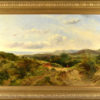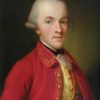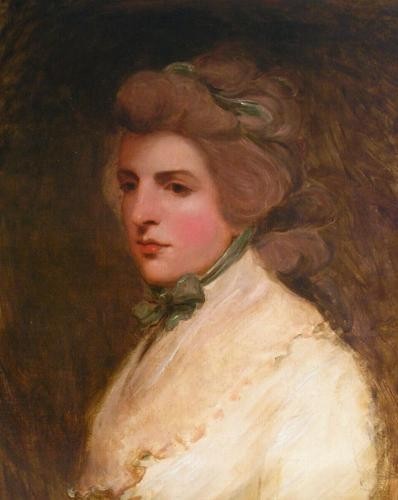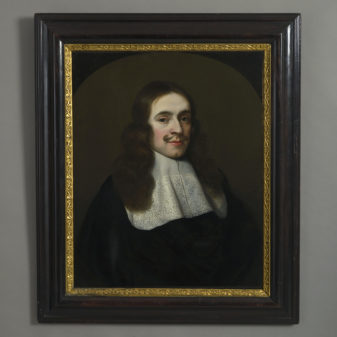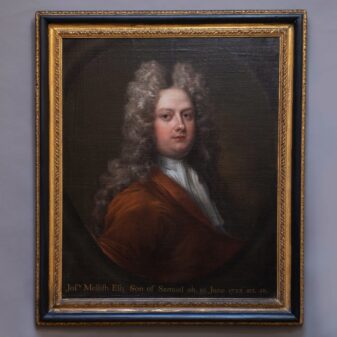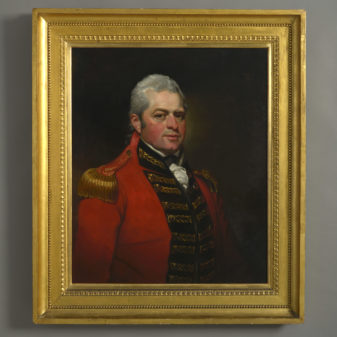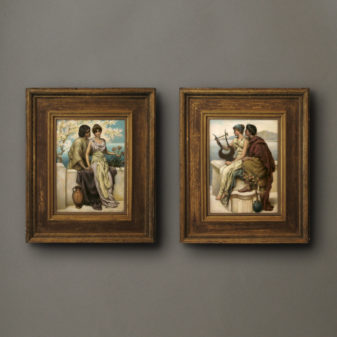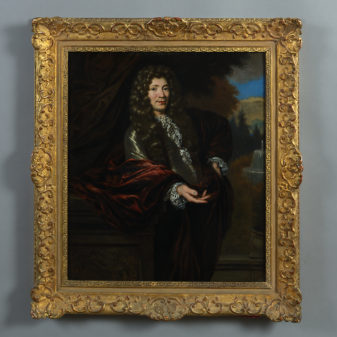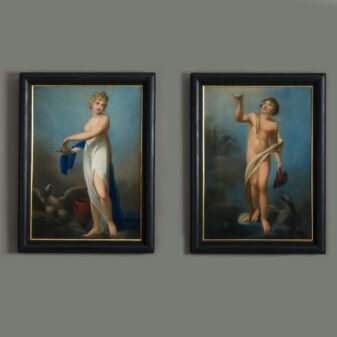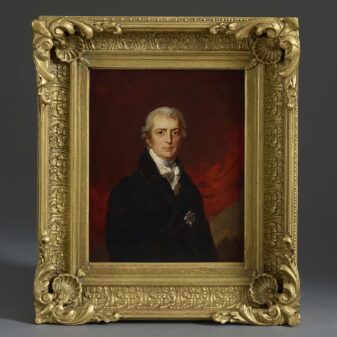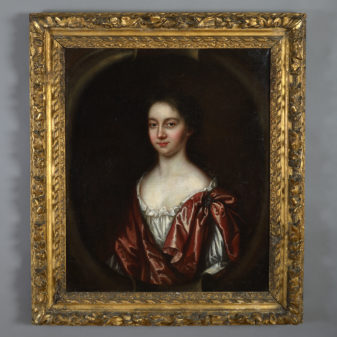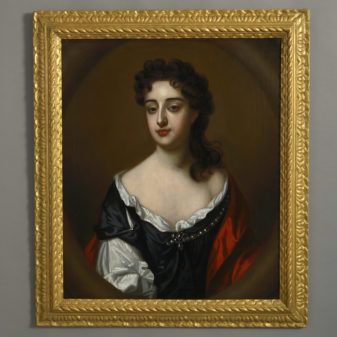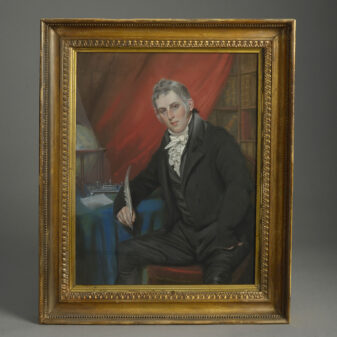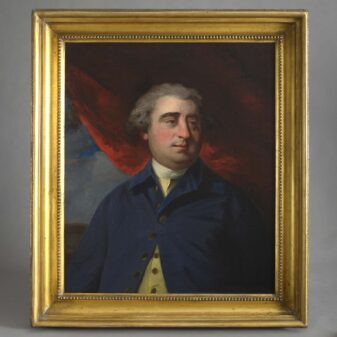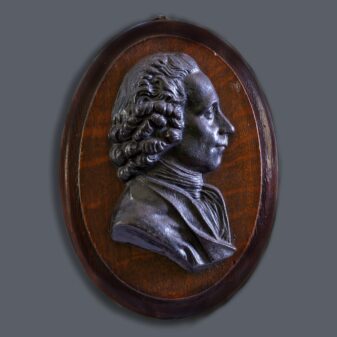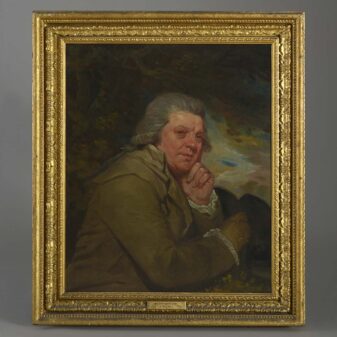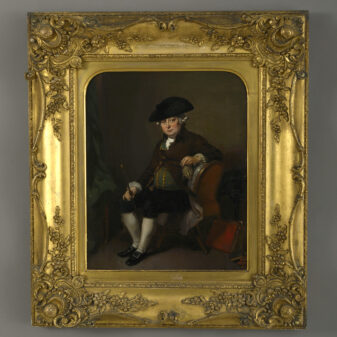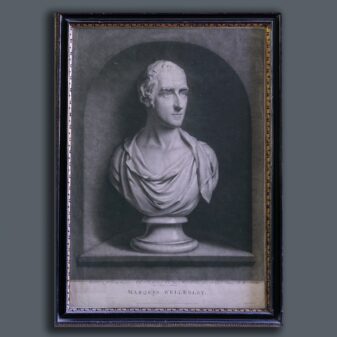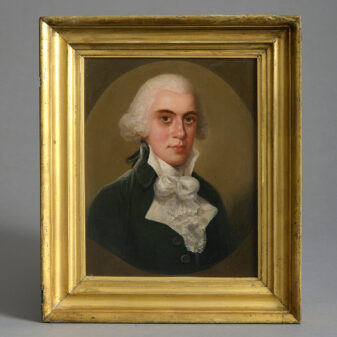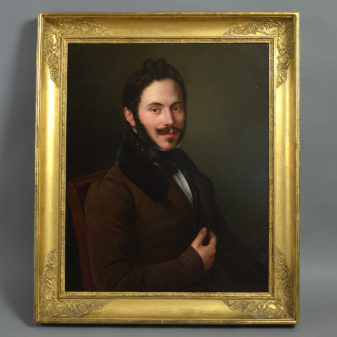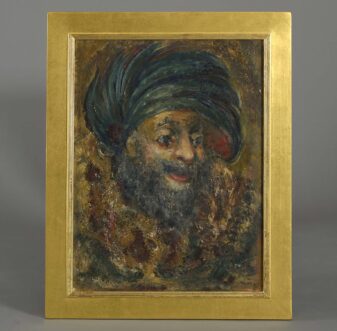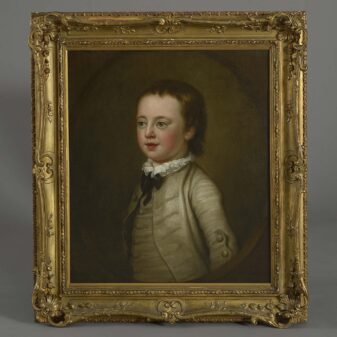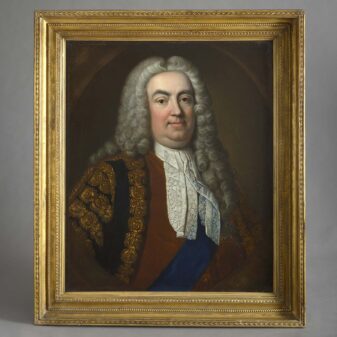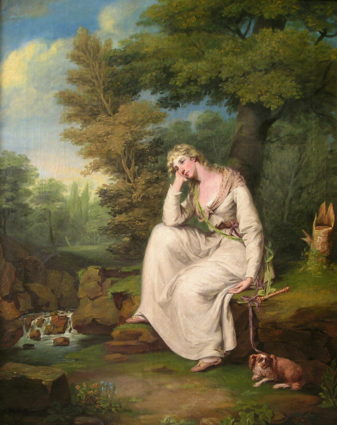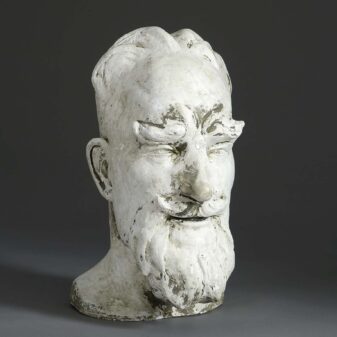Attributed to John Hoppner (1758-1810)
£5,500
SOLD
Frances ‘Fanny’ Kemble (1759-1822)
This striking portrait dates from the 1780s, a decade in which Hoppner rose rapidly in public esteem, exhibiting regularly at the Royal Academy and becoming in 1789 Portrait Painter to the Prince of Wales. Sir Ellis Waterhouse pointed out that Hoppner ‘is forever reminding us of the work of one or other of his great contemporaries, at first of Reynolds and Romney, and later of Lawrence and Raeburn’.
Hoppner is known to have been influenced to such an extent in his early works that he appears to have on occasion executed ‘versions’ of known works by Reynolds. This practice is not completely understood, with too few extant works to enable positive attributions to be confidently made but works have emerged that suggest this working method early in his career. Notably a version of Reynold’s portrait of Lady Frances (Sotheby’s, London, 13 July, 1984, lot 193A, as John Hoppner) which displays striking similarities in manner and execution to the portrait presented here. Both paintings exhibit the same unusually confident approach to finish, a distinct bravura and vivacity – particularly evident in the background – where the broad brushstrokes and the confident application of paint, in some cases merely quick indications of form, suggest an artist at ease with his subject and spontaneous method; for this portrait is not a mere copy of a known work but rather an interpretation of an existing one. The freshness of technique and the overall finish – heavily indebted to Romney’s style – together with the compositional changes suggest the artist was not interested in copying Reynold’s finished portrait of Fanny Kemble but rather repainting it.
There is much of George Romney’s style in Hoppner’s early painting and there is evidence of Romney at least being acquainted with Hoppner early in the latter’s career, an inscription in Romney’s receipt book for the years 1779-84 attesting to this. Exhibiting regularly at the Royal Academy from 1780 Hoppner would have been able to gain fairly easy access to Romney’s studio to see his paintings as he would also to Reynolds.
This portrait was for generations believed to be by Sir Joshua Reynolds and was in one of the most significant English private collections, Mr & Mrs Arthur James, as being so – other pictures in their collection are now with the Tate Gallery and some were sold in 1948 after the death of Mrs. James. Catalogued in 1996 as Studio of Reynolds it compares favourably to Hoppner’s work both early and later in his career, such as the portrait of Lady Hester King and Portrait of a Woman, previously Mrs. Fitzherbert (Metropolitan Museum of Art, New York).
Frances ‘Fanny’ Kemble hailed from a hugely talented theatrical family, her siblings including both the great Shakespearian actor John Philip Kemble and Sarah Siddons. She first appeared on stage in Bath and Bristol in 1780-81 and in London in January 1783, when probably sometime soon after Reynolds painted his portrait of her. She married in May 1786 Francis Twiss, and soon after left the stage to raise a family. Moving from London to Bath she established in 1807 a private school for girls, something she excelled at and proved successful both scholastically and financially. She died in October 1822, always to be remembered for her famous portrait and theatrical relatives.

